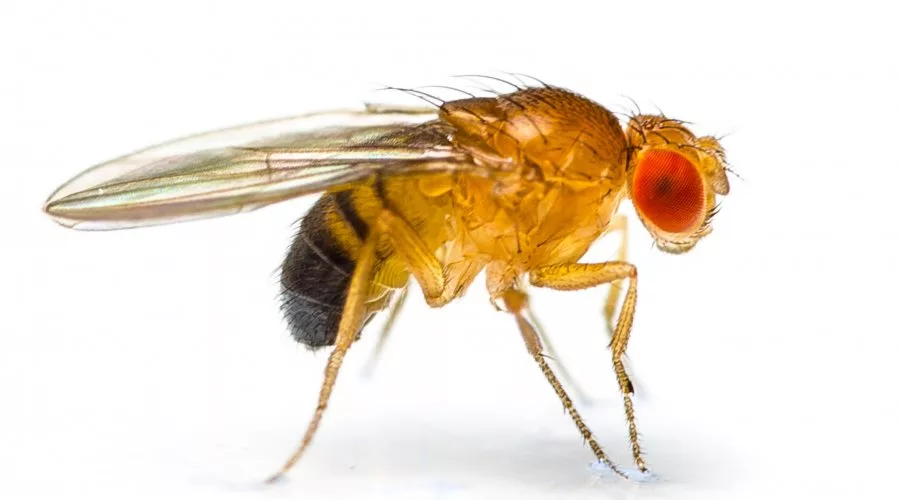Kelly Jackson
Christian County Extension Office
Fruit Flies Frequent Fall Foods
Fruit or vinegar flies are those small gnat-like flies you may have seen flitting about your kitchen during the last few weeks. Although they can be a problem year-round, they are especially common in late summer and fall. That’s because they tend to be associated with ripened or fermenting fruits brought in from the garden or grocery and left out on the kitchen counter. Tomatoes, melons, squash, grapes, apples, peaches, bananas, potatoes, and onions are among some of their favorites but really any fruit or vegetable allowed to mature, over-ripen, rot or ferment will attract these nuisance insects.
Fruit flies are 1/8 inch long and usually have red eyes. The front portion of the body is tan and the rear is black. They enter the home either by flying in from the outside through inadequately screened windows or doors or by hitching a ride on infested fruits or vegetables. Once they are indoors, their reproductive potential is enormous. With satisfactory food sources, the female can lay about 500 eggs. An entire life cycle for the fruit fly (egg to adult) can be completed in about a week. This means that 500 flies can mature, mate, and reproduce within one week, and each female can then lay 500 eggs of her own. Ever said, “Where are all the flies coming from?” Now you know.
We usually associate fruit flies with the fruits and vegetables listed above, and while it the most common reason they come indoors, once there they may find other suitable locations to lay their eggs. Sink drains, garbage disposals, empty bottles and cans, trash containers, mops, cleaning rags; all that’s needed is a moist film of fermenting material.
So, now that you are armed with the information of what these flies are after, how do you stop them? The key to eradicating persistent problems is finding sources of infestation and eliminating them. Compost decayed fruit, recycle your plastic and metal containers, clean up spills, clean and sanitize your trash can, go through your cabinets to see if you dropped a potato or onion in the back that has started to decay, and check your window screens and make any repairs to holes or tears. Screens need to be 16-mesh to keep fruit flies out. Potential breeding sites which are inaccessible (e.g., garbage disposals and drains) can be inspected by taping a clear plastic food storage bag over the opening overnight. If flies are breeding in these areas, the adults will emerge and be caught in the bag. Finding the source(s) can be very challenging and often will require much thought and persistence.
After the source of attraction and breeding is eliminated, a pyrethrum-based, aerosol insecticide may be used to kill any remaining adult flies in the area. A better approach to chemical control however is to construct a trap by placing a paper funnel (rolled from a sheet of notebook paper) into a jar or bottle filled with a few ounces of cider vinegar. Place the trap wherever the fruit flies are seen. Although this is a pretty simple setup, it is very effective. But keep in mind that unless the breeding sites are removed or cleaned, no amount of chemical or funnel traps will solve your fruit fly problem.





